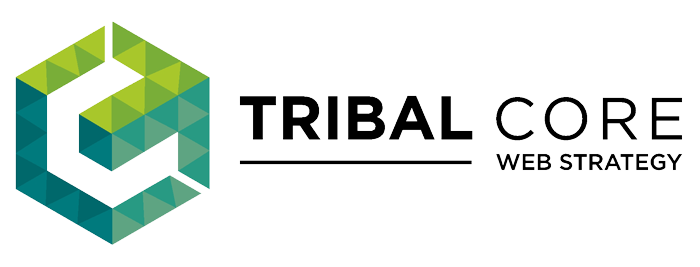
Dear Tyler:
I had a friend reach out to me with a question. She is building out a website for her new business and has someone who she trusts who is willing to build it out for her. She currently doesn’t have the cash to pay for this project so he is suggesting a pay for performance arrangement where he can participate in her results once the site is live.
She is a coach/consultant of sorts and doesn’t manufacture any products, so her brand is HER and I wondered if you had any input as to what a standard arrangement might be for something like this. I know you don’t have any specifics but I just want to make sure she a.) gets a quality site up and b.) that she doesn’t give away the farm.
Any insights as to how to structure such an arrangement (without her giving up equity) would be appreciated.
Thanks,
S.
Hi S. –
This is a great question and one that comes up pretty frequently for both business owners who are bootstrapping and for designers who want to build a portfolio, feel a particular affinity for the business or see a distinct ongoing revenue stream opportunity. For clarity’s sake, I refer below to the “business owner” and the “designer,” but the designer, of course, is also a business owner and needs to construct a relationship that benefits himself and his client.
In the strictest sense, pay for performance would need to be measured. Let’s say there’s a contact form on the site, which generates a lead. There are all sorts of metrics you can attach to that. Some questions to ask:
- What’s a new client worth, be it one-time, annual or lifetime client value?
- What’s the expected conversion rate from lead to new client?
- How does that extrapolate to lead generation cost tolerance?
- How much can the business afford to spend on client acquisition?
The designer would like to recoup his costs and participate in a revenue share as quickly as possible. The business owner is happy to take a haircut on new business, but doesn’t want to (a) burn cash on irrelevant leads and (b) doesn’t want to be locked into too hefty a rev share agreement ongoing.
A few additional considerations:
- Neither party can reasonably expect this to be a “build it and leave it” project. Once a business owner gets a sense of what their website can actually DO, the ideas start flowing and the features requests start growing. So if there’s an ongoing rev share, it should probably be structured in a way that funds additional development. Otherwise, you’d have this scenario: every month the business owner calculates a monthly rev share, has to cut a check to the designer, who does nothing on the site because his responsibility is complete. You can imagine the stress and tension associated with this relationship.
- The business owner has to responsibly account for all business generated by the new site, be it a form or phone call. It gets sticky when, for example, a current client recommends a friend, and that friend then fills out the form on the website. Should the designer be participating in that new client revenue? Does the business owner have a system in place for managing incoming leads, asking the prospect how they found about her, and then accounting all of that on a regular (weekly, monthly or quarterly) basis?
- Where does site traffic come from? If the business owner can’t pay for a site, she can’t pay for, i.e. Google AdWords or other pay-per-click networks. Even if the designer has SEO (search engine optimization) expertise, and can properly conduct keyword research and optimize individual site pages, the business owner’s positioning is severely compromised by (a) lack of domain longevity, (b) lack of relevant, incoming links, (c) lack of social media activity around the site and (d) lack of a content strategy with ongoing optimized website content generation.
The further I dig, the less I like this scenario (and personally, I always say no when approached with this kind of relationship). I would encourage both parties to take an incremental approach that allows the business owner to build a web presence within her means. This benefits both parties, in that the end goal is a long-term relationship that grows as the business grows.
The incremental approach might look something like the following:
- Phase 1 – splash page with logo, one paragraph description, contact / location info. 2 hours
- Phase 2 – basic WordPress site with premium theme, five pages, wufoo.com form integration. 8 hours + $50-100 premium theme license
- Phase 3 – additional feature requests, plugins, functionality, etc. ?
Then there would be two paths for payment. These could be based on the designer’s retail vs. wholesale rate.
- Option 1 – pay up front, receive the designer’s wholesale rate. Phase 1 (2 hours) might cost $80 – $120.
- Option 2 – built on spec, designer receives a retail rate. Phase 1 (2 hours) might cost $160 – $240.
What is built on spec can either be terms, i.e. net 30, net 60, etc., or could then be based on lead generation or client acquisition. In the latter case, the business owner could pay the designer the margin on a new client, say $80 – $100. Or it could be based on lead generation. If the business owner converts leads at a 20% rate, then the designer would earn 20% of the acceptable customer acquisition cost, i.e. $20 per lead on an acceptable customer acquisition cost of $100.
The business owner and designer alike would be well-served by creating an Occam’s Razor agreement – select the path with the fewest assumptions. Work collaboratively to build an incremental web presence within the business owner’s means, and create an enduring relationship that benefits both parties and positions the business owner for long-term success. My two cents.
(photo taken by Tyler, Museum of Broken Relationships, Zagreb, Croatia. August 12, 2012)
